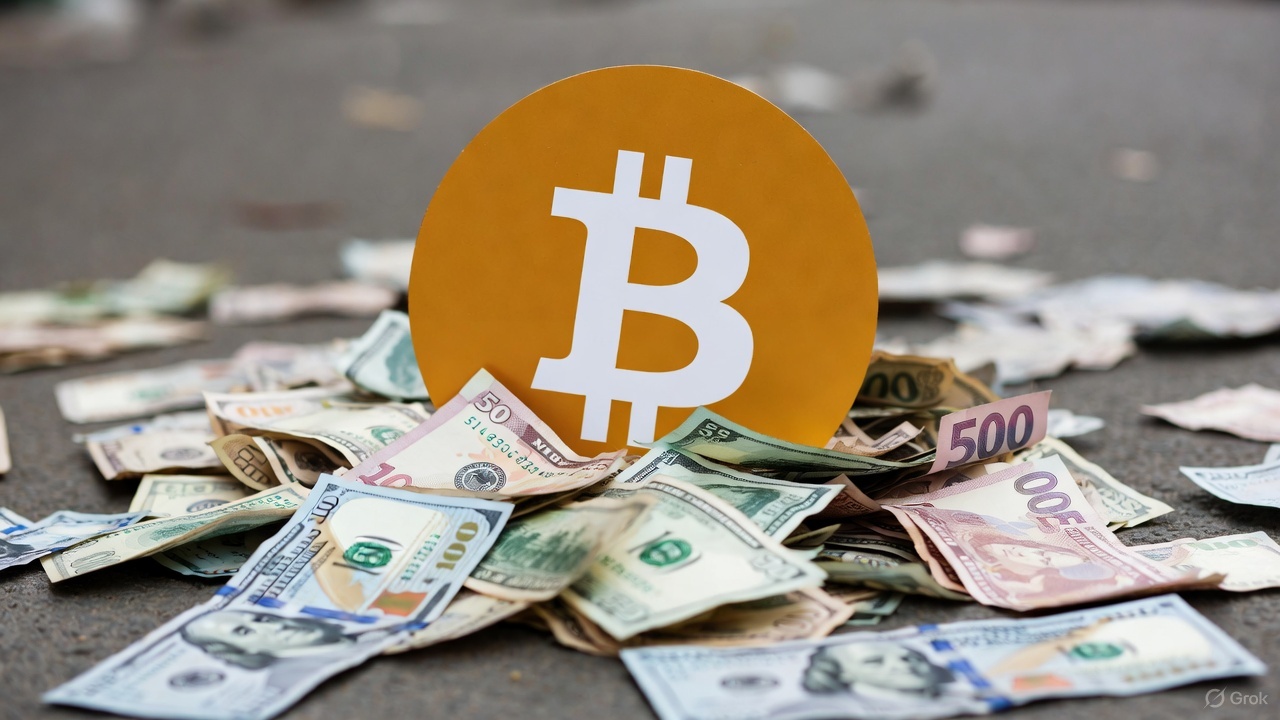Faced with inflation, people do not run out of money, they look for exchange alternatives.
In 2025, bitcoin adoption reduces the impact of arbitrary monetary policies.
In November 1923, in Berlin, Germany, a truly devastating economic and social process was already giving strength to one of the arguments that, a hundred years later, would lead bitcoin to become a reference asset for many: inflation.
The most extreme indicator of this collapse occurred when a US dollar it came to cost 4.2 billion paper marks (or papiermark). It should be taken into account that, until July 1914, the banknotes issued by the Reichsbank —the central bank of Germany between 1876 and 1945—could be freely exchanged for gold.
However, on July 31, 1914, just three days before declaring war on France, the government suspended convertibility into gold and authorized the Reichsbank to issue bills backed only by Treasury bonds. In other words, Germany began World War I with monetary printing unleashed.
Nine years later, frustrated by the need to transport wheelbarrows and sacks full of virtually worthless bills—a situation reminiscent of Venezuela’s inflation crisis between 2016 and 2017—the Germans turned their backs on the mark. Instead, spontaneously turned to alternative means of exchange: US dollars, cigarettes and, following historical tradition, gold.
That was not an unprecedented phenomenon in history, since high levels of inflation had been one of the factors that most weakened the ancient Roman Empire. The denarius, the official currency during much of that regime.
In the time of Augustus (27 BC–AD 14)—the first emperor—that coin contained between 97% and 98% silver. Then suffered a drastic degradation over the years, reaching under Caracalla (198–217 AD) to be only about 51.5% silver.
But without going too far, centuries later too episodes of high inflation were recorded during revolutions or civil wars. Notable among them are the French assigned in 1795-1796—during the French Revolution—or the Confederates during the American Civil War.
What to do when the currency collapses?
Whenever the State destroyed a monetary token, people did exactly the same as the Germans of 1923: they returned to gold, barter, or any asset whose supply could not be manipulated at will. Bitcoin, created in 2009, is nothing more than the digital and 21st century version of those ancient alternatives.
The hyperinflation of the Weimar Republic in Germany It was the first to affect Western society so profoundly. industrialized in recent history.
This episode showed the magnitude of the disaster that would later be repeated—each in different proportions—in countries such as Argentina, Venezuela, Zimbabwe or Lebanon. That was a deliberate political decision and made it clear that Inflation is a monetary phenomenon resulting from the lack of control in the issuance of money.


It should be considered that The State acts first according to its own interests: whether to finance alliances, support war projects or keep public spending intact with a view to winning elections. Under this criterion, it does not hesitate to sacrifice economic stability, transferring the costs to the rest of society and leaving the most vulnerable to face the consequences most severely.
Although reading about inflation may seem simple, its real impact is deeply painful and, in the most extreme cases, can cost human lives. Those who have the least are the hardest hit, losing purchasing power, access to essential goods and economic security. All this, while the effects of monetary lack of control multiply around them.
This degradation process is one of those that, after more than nine decades and after the 2008 financial crisis, motivated the creation of Satoshi Nakamoto. Since the publication of whitepaper Titled “Bitcoin: A Peer-to-Peer Electronic Cash System,” BTC has established itself as an asset capable of preserving value and restore the ability to save to many citizens that had been taken from them by their governments.
After the search for reliable money
The Weimar Lesson still valid in the 21st century. Currently, in countries where fiat currencies face strong inflationary pressure, very similar dynamics are observed. Populations, driven above all by necessity, have found an escape route in bitcoin and cryptocurrencies.
In Venezuela, for example, in 2018 the now defunct LocalBitcoins—a firm that allowed anyone to buy and sell BTC—recorded record volumes worldwide. After the closure of the portal in 2023, as reported by CriptoNoticias, Venezuelans migrated en masse to Binanceconverting the P2P market (peer-to-peer) of this platform in one of the main engines of the daily economy in the country.
This entire process is the same as Ludwig von Mises described: when inflation destroys confidence in money issued by the State, people are not left without means of exchangejust choose another one. And he does it spontaneously, without the need for any bureaucrat to give him permission.
The difference with 1923 is that we no longer depend on physical dollars or cigarettes. Today, in a world where projects like bitcoin and ether (ETH) stand out, central banks are seeking to respond with Central Bank Digital Currencies (CBDC) and increasingly strict regulations. It is clear that they do not intend to sit idly by.
Bitcoin as a mirror of the past
When history repeats itself with surprising precision, it becomes clear that the lessons of Weimar have not been learned. As long as savers continue to trust bureaucrats who promise to solve their problems, inflationary crises will continue to be recurrent.
This, unfortunately, means that governments will continue to finance chronic deficits with uncontrolled emissions without paying a cost. Ergo, they will continue to sell to the population that inflation is some kind of unfortunate side effect of monetary policies built with good intentions.
Today, the role of bitcoin resembles the role that gold played in 1923in Germany. In that year, the government lost monetary influence, at least for a brief period. In 2025, the massive use of bitcoin limits the damage of arbitrary central bank policies.
That is, instead of waiting for solutions that will probably never come, people might as well turn to agorism and counter-economics. A philosophy that promotes economic freedom and the creation of parallel markets. All this outside of state control. And cryptocurrencies represent a solid option for this.
History teaches us that when “parallel” money becomes more reliable than “official” money, the latter will never be the same again. It’s that simple.
Disclaimer: The views and opinions expressed in this article belong to its author and do not necessarily reflect those of CriptoNoticias. The author’s opinion is for informational purposes and under no circumstances constitutes an investment recommendation or financial advice.






Leave a Reply